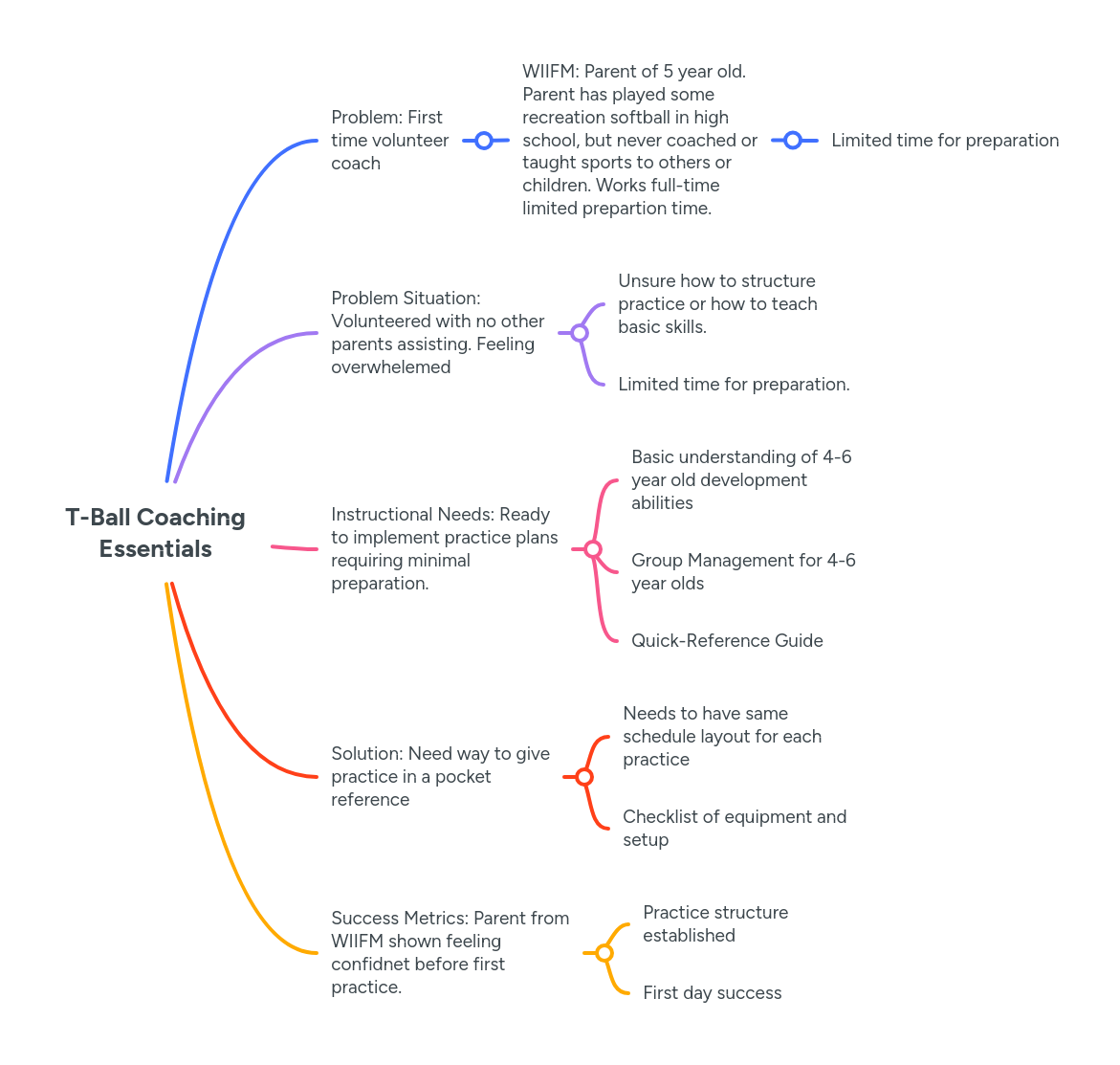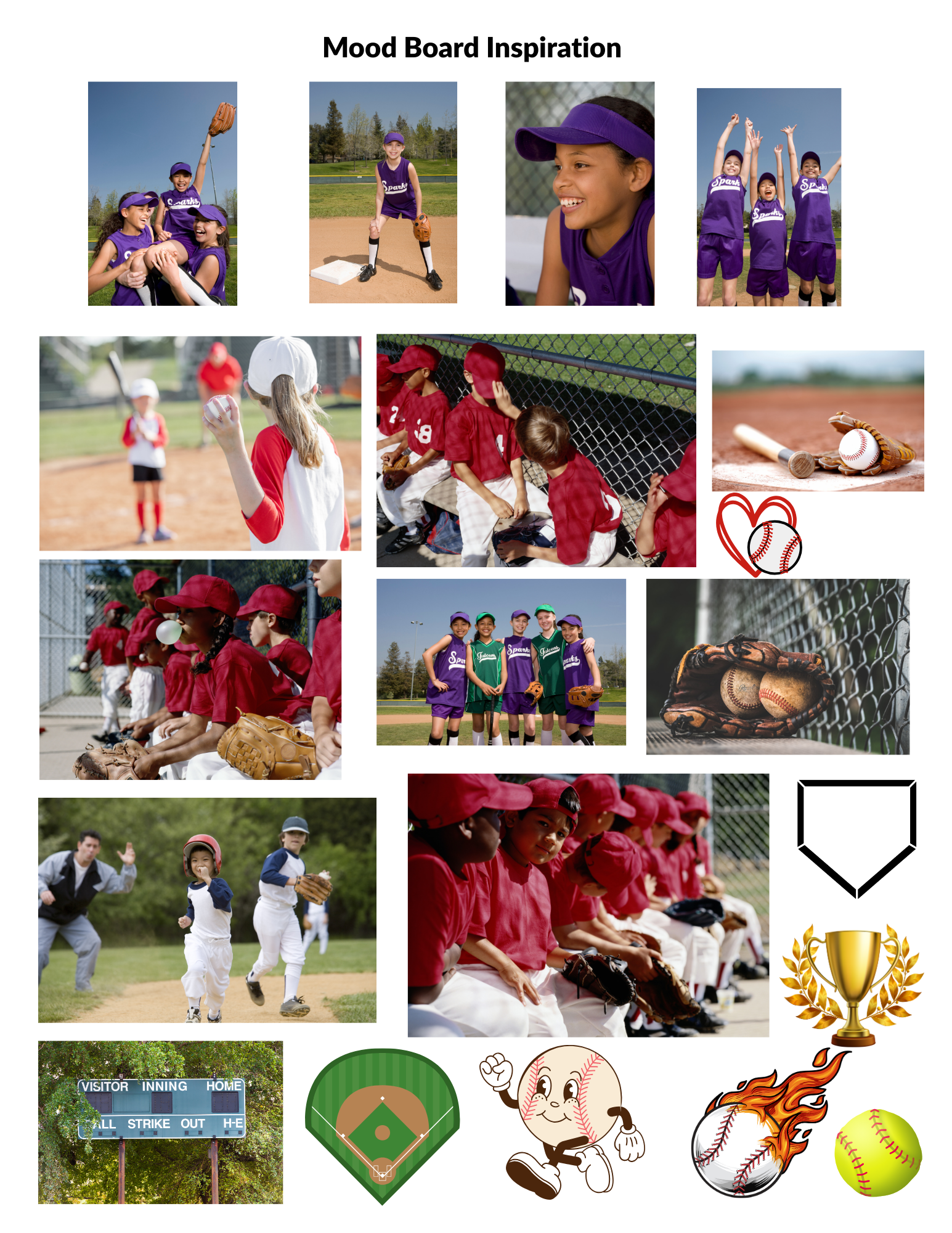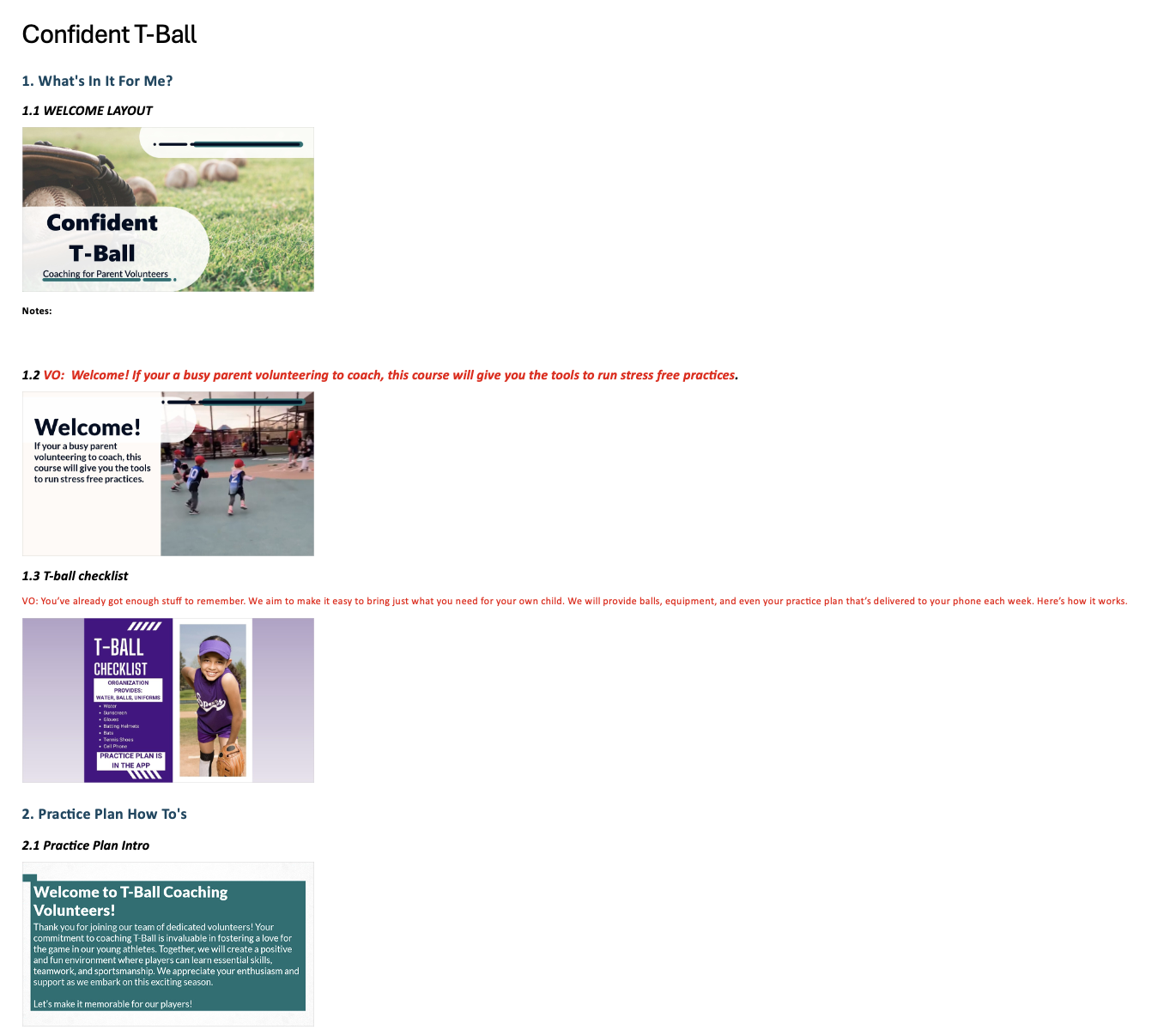Confident T-Ball Coaching for Parent Volunteers
Background
I designed this project as a microlearning concept project for a fictional youth T-ball sports team that is training parent volunteers who are short on time and reluctant to volunteer. Many parents do not feel they have the skills or sports knowledge to coach. I wanted to be able to show them, especially at this young age, that all it takes is being able to read the plan that is delivered each week to them.
This project changed from its initial concept of scenario-based covering many possible scenarios a coach may face to a microlearning focusing just on the practice plan. The feedback initially was that parents don’t have time to sit through a longer training and will abandon before getting to the practice plan.
Lesson Plans
Audience:
First-time volunteer T-ball coaches to children aged 4-6 years old of a fictional youth T-ball sports team.
Lesson Focus and Goals:
Volunteer coaches are prepared to lead their first practice successfully and have knowledge of how to use the practice plans for future practices.
The Problem:
First Time-volunteer coaches report to feeling unprepared to coach. There is a limited amount of time for any in-person training. The coaches may have a minimal understanding of age-appropriate coaching.
Solution:
By the end of this module, volunteer coaches will be able to interpret practice plans and implement basic management strategies for 4-6 year old T-ball players.
Learning Outcomes:
Participants will demonstrate ability to interpret and implement age-appropriate T-ball practice plans.
Apply effective group management strategies for 4-6 year old players.
Minimum 80% pass rate.
Tools Used:
Articulate StoryLine 360, MindMeister, Canva, Adobe Podcast, Word, PowerPoint
My Responsibilities:
Instructional Design, eLearning Development, Visual Design, Animation / Motion Graphics, Sound Design
My Process
To propose the best solution for my client, I used the ADDIE model. I started with analysis by meeting with the organization’s founder to understand the big picture problem and goals.
To dive deeper and gain multiple perspectives, I spoke with two SMEs in youth T-ball coaching to get insight into how the issue plays out in practices, and then gathered data from parents through a survey.
I also attended two in-person sessions with a seasoned volunteer youth softball coach, which gave me a clear understanding of the sessions I’d be replicating in the eLearning and helped me fine-tune the ideal outcomes.
Action Mapping
As part of the analysis process, I worked with two SMEs at the organization - a former college baseball player who is now the lead coach for the organization and a staff member who works closely with the volunteers. Together, we pinpointed the root problem and set the main goal: ensuring coaches are prepared to interpret and implement practice plans. A secondary goal, which we knew would follow, was to apply appropriate time management techniques for each practice with group management strategies.
I also guided the SMEs in breaking down this big goal into specific, observable actions for volunteers, prioritizing the top three to keep things manageable and avoid overwhelming the learners.
Instructional Strategy
Interactive Scenario-Based Learning. Decision-point interactions and feedback
Multimedia Learning Principles
Engagement Techniques: Progress tracking, performance feedback
Visual Mockups
To bring the storyboard to life, I started by creating a mood board to refine the visual style. I then developed a style guide to ensure everything aligned with brand. After that, I iterated on wireframes and mockups to finalize the layout for each slide.
I used the fonts and main colors from the company website to create a sense of connection for learners. I also added accessible color choices to ensure the content was easy to read on-screen.
Text-Based Storyboard
After completing the action map, I began the design phase of my project. I started with the creation of an outline for the text by mapping out questions and scenarios for the project.
This served as the blueprint for the design phase when I began to build in StoryLine 360. To help replicate real-world situations and provide support to busy parents, I kept scenarios short and memorable. I also ensured that coaches knew the schedule for each practice and how it would replicate what they learned in their course.
Development
After collecting and applying feedback from the script and slides, I began to develop the project using StoryLine 360. I gathered feedback from other instructional designers, as well as youth coaches, for their feedback on my initial scripting and prototype.
I had already designed each slide layout in Storyline during the prototype and planning stages. I began by looking at StoryLine 360 templates that would serve well with my multiple-choice questions and have the ability to grade correctly. I was able to modify a standard placeholder slide by creating layers for users to be able to click through for all of the parts of a practice schedule. This made the practice plan more seamless and shorter as the feedback on the initial review was to focus on making this a microlearning as its target audience is busy parents who don’t necessarily have 30 minutes to watch this training.
Results and Takeaways
Although it is a conceptual project, it has been shared within the Instructional Designers' community and with current baseball and softball coaches and has been received with positive feedback.
In this project, I learned a great deal throughout the design and development of the learning experience. It was my first opportunity to create a microlearning for a fictional client and make a decision about what constraints I would face as far as brand cohesion.
In this project, I began to explore more of the new features with StoryLine 360 AI with the use of voice generated from text. I felt this had come a long way over just a year ago, but I feel I can still tell that this is AI. If I had more time on this project, I would have focused more on recording the audio myself and editing the sound quality to be better refined.




